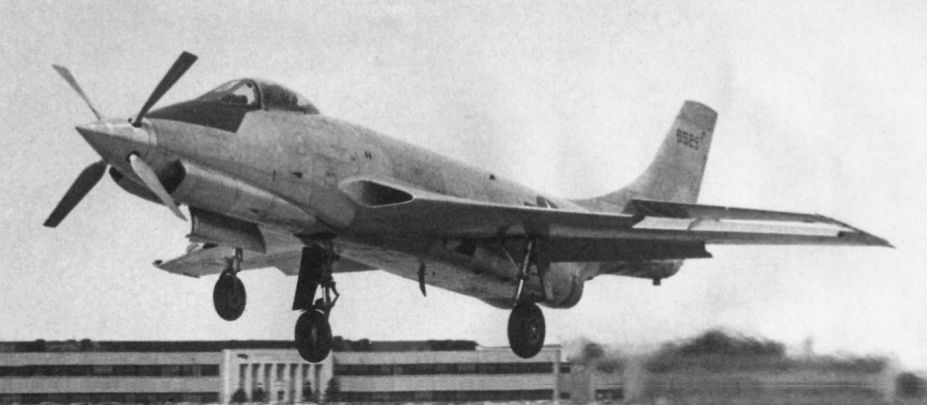
The first pilot to officially break the sound barrier was Chuck Yeager, who did so in the rocket-powered Bell X-1 in his famous flight on October 14, 1947, at an altitude of 45,000 ft. The sound barrier (or sonic barrier) is the term which describes the increase in drag that an aircraft experiences as it approaches supersonic speeds.
The effect was first experienced by aircraft in World War II. In dry conditions, an aircraft needs to be moving at about 767 mph to hit the barrier. Only a few aircraft at the time were even capable of approaching these speeds, and for many years, it was believed that the effects of this barrier would make supersonic travel impossible.
NACA (the National Advisory Committee for Aeronautics, which would become NASA) did do some research in the 1940’s on propeller driven aircraft to see if supersonic speeds were achievable in aircraft of this type.
They created a high-speed propeller program and invested heavily in new propeller designs. Over several years, they were able to create a propeller that could safely reach these speeds safely. To do it, the propeller blades were thinned and shortened, and the angle increased. The propellers had to be designed differently because before the aircraft itself reaches the speed of sound, parts of the blades are already at or exceeding that speed, creating pockets of supersonic airflow that generate shock waves so intense that they can destroy the propeller. Adjusting the length and width of the blades ensures that the propeller doesn’t meet or exceed Mach 1 before the aircraft itself. Delaying the onset of these forces ensured that the prop could operate at supersonic speeds.
Tests were done using an XF-88 research aircraft, which achieved speeds of Mach 1 and was piloted safely back to Earth. While the advent of the jet engine resulted in the abandonment of the supersonic propeller program at NACA, recent concerns about fuel efficiency have led to a renewed interest in propeller aircraft investments and even the re-purposing of older war birds for special missions. So, who knows? There may be a revival in interest in this type of propeller research in the future.
Learn more about the supersonic aircraft propeller program from the NASA archives.